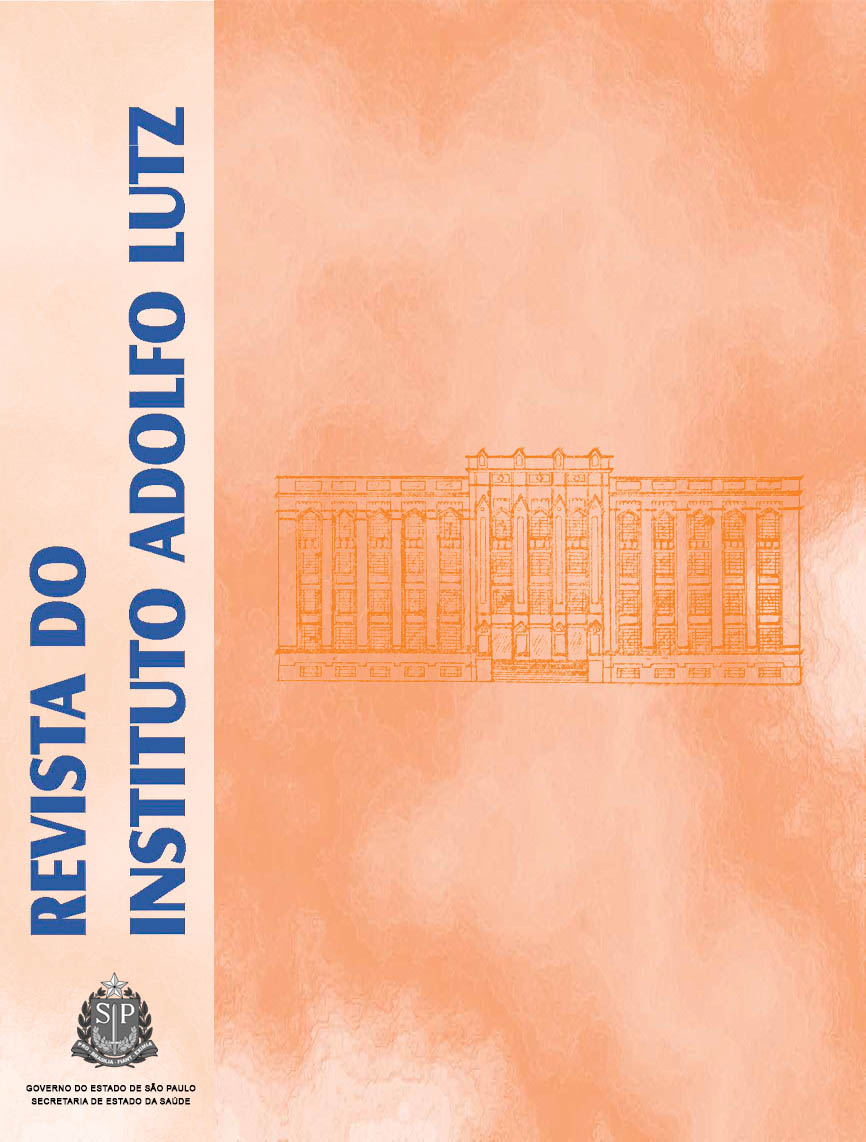Abstract
In December 2007, an outbreak of food-borne infection was described in 54 employees of an engineering and construction company on duty an oil refinery in Cubatão, SP, Brazil. The main symptoms presented were vomiting, diarrhea, abdominal pain, fever and headache. The municipal health surveillance services collected the food samples served in the day after the outbreak and also the water samples from catering firm and from refinery dining room, and sent them to Instituto Adolfo Lutz in Santos. The samples were analyzed by the conventional methods, following the Compendium APHA (2001) and the Standard Methods (2005) guidelines. The results were analyzed according with Brazilian Ministry of Health legislation ANVISARDC 12/2001 and Decree 518/2004. Coliforms bacteria group were isolated from water samples, and faecal coliforms (N.M.P. 28/g) were isolated from roast meat meal served at the company dining room. Coagulase positive Staphylococcus, Bacillus cereus, Salmonella spp and sulfite reductor Clostridium were not found. In January of 2008, the municipal health surveillance services returned to the establishments involved, and collected the food samples resulted negative for bacteria. A joint-work of municipal health surveillance service and public health laboratory has been relevant to deal with epidemiological and sanitary surveillance matters.References
1. Zandonadi RP, Botelho RBA, Sávio KEO, Akutsu RC, Araújo WMC. Atitudes de risco do consumidor em restaurantes de auto-serviço. Rev Nutr.2007; 20(1):19-26.
2. Lynch RA, Elledge BL, Griffith CC, Boatright DT. A comparison offood safety knowledge among restaurant managers, by source of trainingand experience, in Oklahoma County. J Environ Health.2003; 66(2):9-14.
3. Franco BGM, Landgraf M. Microbiologia dos Alimentos. São Paulo: Atheneu; 1996.
4. Germano PML, Germano MIS. Agentes bacterianos de toxinfecções. In: Germano PML, Germano MIS, editores. Higiene e Vigilância Sanitária de Alimentos. São Paulo: Livraria Varela; 2001. p.199-258.
5. Barros MAF, Nero LA, Monteiro AA, Beloti V. Identification of maincontamination points by hygiene indicator microorganisms in beef processing plants. Ciênc Tecnol Aliment. 2007;27(4): 856-62.
6. Soares CM, Valadares GF, Azeredo RMC, Kuaye AY. Contaminação ambiental e perfil toxigênico de Bacillus cereus isolados em serviços de alimentação. Ciênc Rural, Santa Maria.2008,38(2): 504-10.
7. Paula P, Rodrigues PSS, Tórtora JC Oliveira, Uchoa CMA, Farage S. Contaminação microbiológica e parasitológica em alfaces (Lactucasativa) de restaurantes self-service, de Niterói, RJ. Rev Soc Bras MedTrop. 2003; 36(4):535-7.
8. Rodrigues KL, Moreira AN, Almeida ATS, Chiochetta D, RodriguesMJ, Brod CS, Carvalhal JB, Aleixo JAG. Intoxicação estafilocócica em restaurante institucional. Ciênc Rural, Santa Maria, 2004; 34(1): 297-299.
9. Brasil. Resolução RDC nº 12 de 2 de janeiro de 2001 da ANVISA do Mistério da Saúde. Diário Oficial [da] República Federativa do Brasil,Poder Executivo, Brasília, DF, 10 jan. 2001. Seção 1, nº 59, p. 45-53.
10. Downes FP, Ito K, editors. Compendium of Methods for the Microbiological Examination of Foods. Washington: Edwards Brothers;2002.
11. Eaton AE, Clesceri LS, Rice EU, Greenberg AE. Standard Methods forthe examination of water and wastewater. Baltimore: United BookPress; 2005.
12. Brasil. Portaria nº 518 de 25 de março de 2004 do Mistério da Saúde. Diário Oficial [da] República Federativa do Brasil, Poder Executivo, Brasília, DF, 26 mar. 2004. Seção 1, nº 59, p. 266-70.
13. Salvatori RU, Bessa MC, Cardoso MRI. Qualidade sanitária deembutidos coletados no mercado público central de Porto Alegre-RS. Ciênc Rural.2003;33(4):771-3.
14. Silva MP, Cavalli DR, Oliveira TCRM. Avaliação do padrão coliformesa 45ºC e comparação da eficiência das técnicas dos tubos múltiplos epetrifilm EC na detecção de coliformes totais e Escherichia coli emalimentos. Ciênc Tecnol Aliment.2006;26(2): 352-9.
15. Rangel JM, Sparling PH, Crowe C, Griffin PM, Swerdlow DL.Epidemiology of Escherichia coli O157:H7 Outbreaks, United States,1982–2002. Emerg Infec Dis. 2005;11(4): 603-9.
16. Takayanagui OM, Capuano DM, Oliveira CAD, Bergamini AMM, Okino MHT, Castro e Silva AAMC, Oliveira MA, Ribeiro EGA, Takayanagui AMM. Análise da cadeia de produção de verduras em Ribeirão Preto, SP. Rev Soc Bras Med Trop.2006; 39(2): 224-6.
17. Simões M, Pisani B, Marques EGL, Prandi MAG, Martini MH, ChiariniPFT, Antunes JLF, Nogueira AP. Hygienic-sanitary conditions of vegetables and irrigation water from kitchen gardens in the municipalityof Campinas, SP. Braz J Microbiol. 2001;32:331-3.
18. Sabioni JG, Hirooka EY, Souza MLR. Intoxicação alimentar por queijominas contaminado com Staphylococcus aureus. Rev Saúde Públ.1998;22(5):458-61.
19. Peresi JTM, Almeida IAZC, Lima SI, Marques DF, Rodrigues ECA,Fernandes SA, Gelli DS, Irino K. Surtos de enfermidades transmitidas por alimentos causados por Salmonella Enteritidis. Rev Saúde Públ.1998;32(5): 477-83.

This work is licensed under a Creative Commons Attribution 4.0 International License.
Copyright (c) 2008 Instituto Adolfo Lutz Journal
